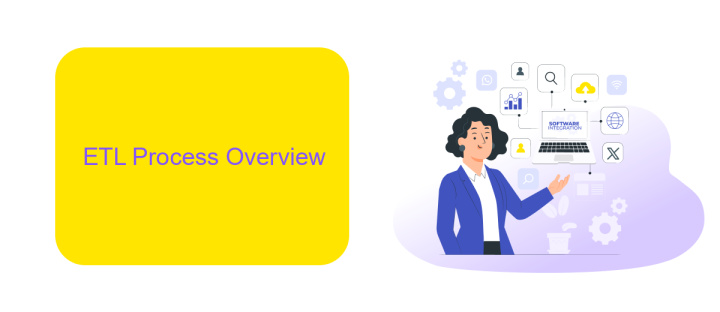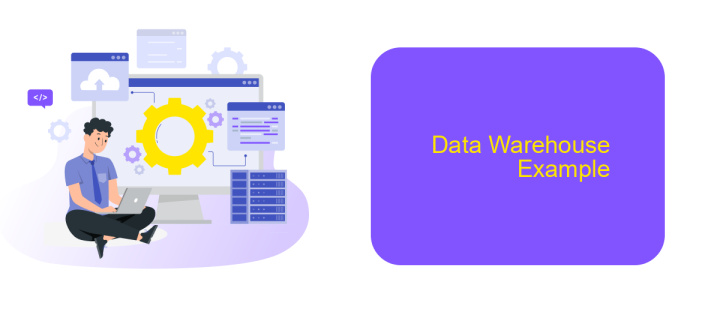ETL Process in Data Warehouse Example
The ETL (Extract, Transform, Load) process is a cornerstone of data warehousing, enabling organizations to efficiently consolidate and analyze large volumes of data. This article provides a comprehensive example of the ETL process in action, detailing each step from data extraction and transformation to loading into the data warehouse. Understanding this process is crucial for optimizing data management and decision-making.
Introduction
In today's data-driven world, businesses rely heavily on data warehousing to make informed decisions. The ETL (Extract, Transform, Load) process is a crucial component of data warehousing, enabling the seamless integration and transformation of data from various sources into a centralized repository for analysis and reporting.
- Extract: This phase involves collecting data from diverse sources such as databases, APIs, and flat files.
- Transform: The extracted data is then cleaned, formatted, and transformed to meet the requirements of the target data warehouse.
- Load: Finally, the transformed data is loaded into the data warehouse for further analysis and reporting.
One effective tool for managing data integration is ApiX-Drive, which simplifies the process of connecting various data sources and automating data workflows. By leveraging such tools, businesses can ensure a more efficient and accurate ETL process, ultimately leading to better data insights and decision-making capabilities.
ETL Process Overview

The ETL (Extract, Transform, Load) process is a fundamental procedure in data warehousing that involves extracting data from various sources, transforming it into a suitable format, and loading it into a data warehouse. This process ensures that data is cleaned, standardized, and ready for analysis. During the extraction phase, data is collected from multiple sources such as databases, APIs, and flat files. The transformation phase involves data cleansing, normalization, and aggregation to ensure consistency and accuracy. Finally, the loading phase transfers the transformed data into the data warehouse for storage and future querying.
Efficient ETL processes are essential for maintaining data quality and reliability. Tools like ApiX-Drive can significantly streamline the integration and automation of data extraction from various sources. ApiX-Drive provides a user-friendly interface and robust features that facilitate seamless data integration without requiring extensive coding knowledge. By leveraging such tools, organizations can enhance their ETL workflows, reduce manual intervention, and ensure timely data availability for business intelligence and analytics purposes.
ETL Process Steps

The ETL process is a critical component in data warehousing, ensuring that data is accurately extracted, transformed, and loaded to facilitate meaningful analysis. Each step in the ETL process plays a vital role in maintaining data integrity and usability.
- Extraction: This initial step involves retrieving data from various source systems, such as databases, APIs, and flat files. Tools like ApiX-Drive can simplify this process by automating data extraction from multiple sources.
- Transformation: Once the data is extracted, it must be cleaned, formatted, and transformed to meet the requirements of the target data warehouse. This step may include data validation, deduplication, and enrichment.
- Loading: The final step is loading the transformed data into the data warehouse. This can be done in bulk or incrementally, depending on the volume and nature of the data.
By following these ETL process steps, organizations can ensure that their data is accurate, consistent, and ready for analysis. Tools like ApiX-Drive can further streamline the process, making it easier to manage data integration and transformation tasks.
Data Warehouse Example

A data warehouse example can illustrate how businesses consolidate and analyze vast amounts of data from various sources. Imagine a retail company that collects data from online sales, in-store transactions, customer feedback, and supply chain logistics. Integrating this data into a single repository allows for comprehensive analysis and strategic decision-making.
To achieve this, the ETL (Extract, Transform, Load) process is crucial. Data is extracted from diverse sources, transformed into a consistent format, and loaded into the data warehouse. This ensures that all data is standardized and ready for analysis. Tools like ApiX-Drive can simplify this process by enabling seamless integration between different data sources and the data warehouse.
- Extract: Retrieve data from various sources such as databases, APIs, and flat files.
- Transform: Cleanse, format, and aggregate the data to ensure consistency.
- Load: Import the transformed data into the data warehouse for storage and analysis.
By utilizing a data warehouse, businesses can gain valuable insights, identify trends, and make informed decisions. The streamlined ETL process, supported by integration tools like ApiX-Drive, ensures that data is accurate, timely, and actionable.
- Automate the work of an online store or landing
- Empower through integration
- Don't spend money on programmers and integrators
- Save time by automating routine tasks
Conclusion
The ETL process is a cornerstone of modern data warehousing, enabling organizations to efficiently extract, transform, and load data from various sources into a centralized repository. This streamlined approach not only ensures data consistency and accuracy but also facilitates better decision-making through comprehensive data analysis. By automating these processes, businesses can save time and resources, allowing them to focus on deriving actionable insights from their data.
Incorporating tools like ApiX-Drive can further enhance the ETL process by simplifying the integration of diverse data sources. ApiX-Drive offers seamless connectivity and automation capabilities, reducing the complexity of data integration tasks. This ensures that data flows smoothly and reliably into the data warehouse, providing a robust foundation for analytics and reporting. Ultimately, leveraging such tools can significantly improve the efficiency and effectiveness of data management strategies, empowering organizations to unlock the full potential of their data assets.
FAQ
What is an ETL process in a data warehouse?
Why is the ETL process important for a data warehouse?
What are the main stages of the ETL process?
How can I automate the ETL process?
What are some common challenges in the ETL process?
Apix-Drive is a simple and efficient system connector that will help you automate routine tasks and optimize business processes. You can save time and money, direct these resources to more important purposes. Test ApiX-Drive and make sure that this tool will relieve your employees and after 5 minutes of settings your business will start working faster.


